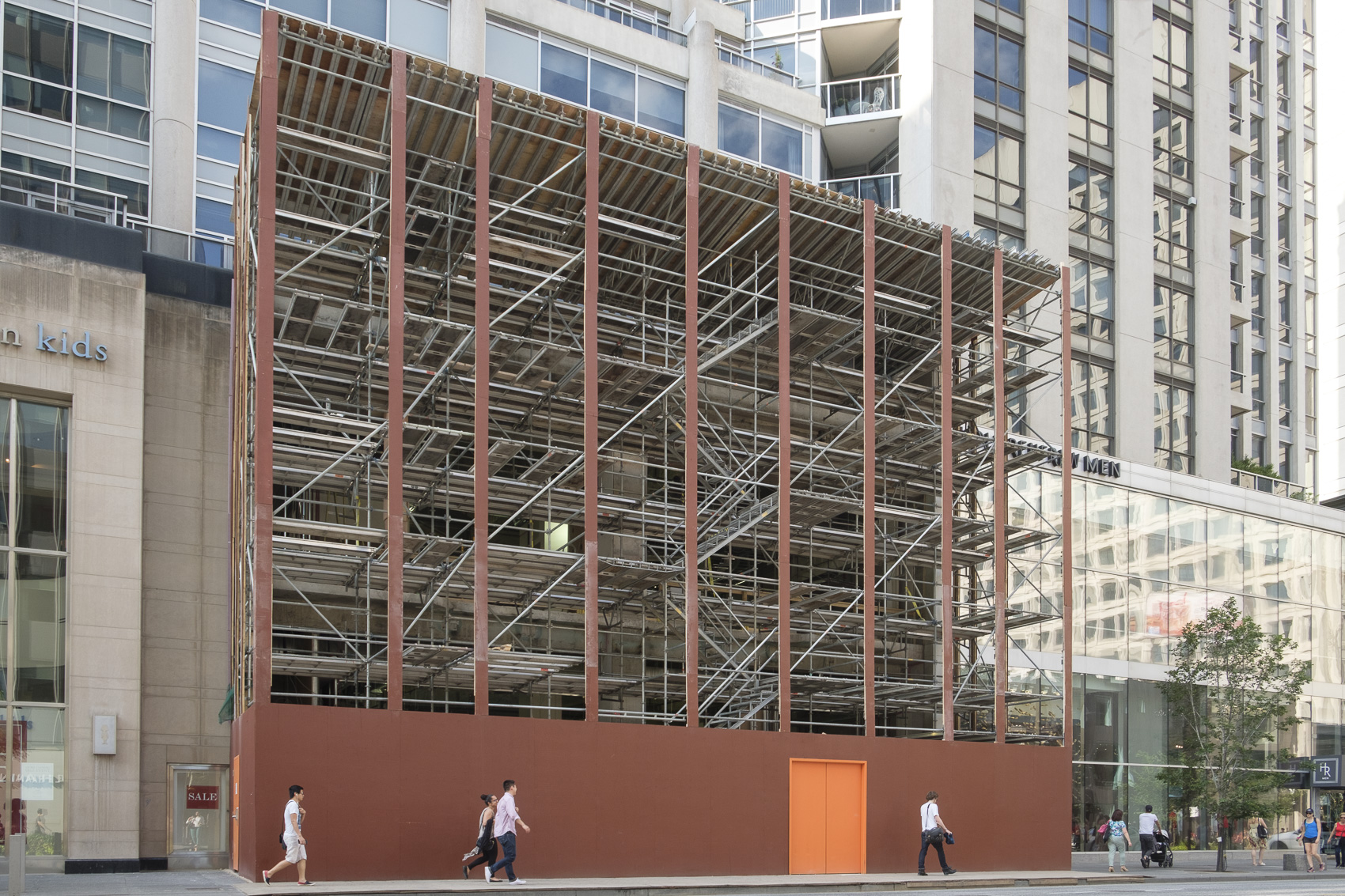Fujifilm X-Pro 3 Review
Into
The Fujifilm X-Pro 3 was released I October 2019. For reasons I’ll got into in a bit I decided to purchase one in the summer of 2021 and am just now writing a review. As you probably know if you’re at all interested in this camera already. The Fuji X-Pro 3 is a ranger finder styled camera. It is not a true range finder of course like a Lecia M is but it is made to look close to one and handle in many of the same ways.
The X-Pro 3 is a very premium camera, there is no doubt about that. With this model Fuji has moved to using titanium for the top and bottom plates. This means the camera comes in painted black, or in a coated finish called Dura black or Dura Silver. The dura coatings should prevent most scratches from showing up but does cost an extra $300 Canadian at the time of this writing. By pure luck I ended up with a Durablack model.
It is a camera that wants you to use it the way Fuji designed it to be used and not in any other fashion. I moved to this camera body from an X-T2. I was also shooting a lot with the X100F at the time and was liking that form factor more and more. Just over a year into the pandemic with no travel options in sight I decided I didn’t mind spending the money on a bit of gear and wanted to give the X-Pro3 a good go.
Screen(s)
I feel like I need to talk about the screens before much else here. When I say Fuji wants you to use this camera their way this is a big part of it. The main screen folds into the back of the camera at which point you only see the rear status screen and have to use the viewfinder to shoot. You probably alright know if this is an acceptable situation in your mind or not. You can of course fold out the screen and shoot with it folded at waist level or full down, but it doesn’t lie flat in the body with the screen facing out like most cameras do.
In doing this Fuji is basically telling you that with the viewfinder, in either electronic or optical mode is the ‘correct’ way of doing thing. I tend to agree with them on this point.
If you think that this is a good thing or not will depend on your previous photography experience and what you want to get out of a camera. I can understand if you’re used to shooting on a phone for example why composing your shots on a screen might be preferable to you. I am a person who learned photography on film and I’m currently shooting on a Leica M6 TTL along side the X-Pro 3. I also have little interest in shooting video generally. I also never review my photos in the field. So for me getting a digital camera that is closer to a film experience in many ways was appealing. You might think I’m completely wrong and that’s fine.
The stats on the main screen are pretty standard, it’s a 3-inch touch screen and 1.6 million dots. Generally, it’s plenty bright to see in moderate daylight and completely customizable in what information is displayed in the menus.
The rare status screen is a memory LCD screen that uses very little power when off, it is not e-ink like some people assume and does require a battery in the camera to work. It is 16 colour and can display the current film simulation mode or some basic exposure information. This screen has no backlighting so you will not be able to see it in the dark really.
Viewfinder
The viewfinder is similar in many ways to previous X-Pro cameras. It is a hybrid of an optical finder (OVF) and electronic (EVF) or in some modes a mix of both. It is simple to switch between the two main modes and I do often find myself going back and forth depending on the lens I’m using at the time.
The viewfinder on the X-Pro 3 is larger than previous models and they have moved to an OLED panel which makes an enormous difference in contrast. The magnification on the EVF is now higher as well sitting at 0.66x. The EVF is smooth in normal mode but I tend to use boost mode which brings the refresh rate up to 100fps, so it always looks perfectly smooth. Unfortunately, the optical viewfinder now longer has dual magnification modes so it is solely set at 0.52x. In practical terms this means that the widest lens you’ll get bright lines for is a 23mm and any lens longer that probably the 56mm gets kind of hard to see. This means I have mostly use the EVF when using the 16mm F1.4 for example.
I’ve used the 23mm F1.4 for a long time and sadly on the Xpro3 it covers a significant corner of the OVF. With no lens hood on the 23mm F1.4 is fine but I prefer to use it with a hood when possible. The 35mm F1.4 is fine however so it will take some time to get used to which viewfinder is right for you and with which lens.
Build Quality and handling
The X-Pro 3 is, according to Fuji 497grams with a battery and card in it. I do not believe there is any weight difference between the different finishes. Surprisingly this is a touch less than an X-T3. The camera feels incredibly solid in the hand and the grip is pretty good for the size as well. Everyone’s hands are different so the grip might seem a bit small to you. But I don’t think anyone is going to find much to complain about in the build quality department. The camera is also fully weather sealed now as well so you should be able to shoot in most weather conditions should you have a WR lens as well if that’s a think you like to do.
Handling is one of those things that might take you a bit of getting used to if you’re moving from a previous Fujifilm camera. Gone is the D-Pad on the back of the camera. There is now a simplified control surface and the joy stick. There are two unmarked buttons that are what I personally use to get to my most common settings. However, you can customize most of the buttons and dials on the camera should you find yourself needing even more options.
I’m a person who tends to setup the camera the way I like and then rarely change anything, so the simplified controls are more than enough for my needs.
The camera holds two SD cards which can be setup in various ways. My preferred set up is to have RAW files go to one card and JPEG to the other. This way I never need to import the JPEGs to my computer but have them while shooting to transfer to my phone if I want.
Autofocus and image quality
This far in there are plenty of people on the internet who have talked about the image quality of this camera with lots of samples and charts. I think the main points to get across are that this camera is using a 26.1 mp sensor and will produce very fine detail in your images. Yes, it is not a full frame camera but if you’ve been shooting Fuji for any length of time that should not be surprising to you. Fuji is generally known for how good the jpeg images out of camera are and that still holds true here. Though I often shoot JPEG to one of the two SD cards as I saw above but I tend not to use them day to day.
There are now 17 different film simulation options. You can set any of these and you will see the simulation in the EVF as well. I personally only use a few when I’m out shooting but then try out others in the editing process in Capture One Pro.
With the style of shooting that I do most often blazing fast autofocus is not something I need. That said it has seemed very quick even on older lenes like my 23mm F1.4 and 35mm F1.4. There are a few differences between the optical viewfinder and electronic here. First there are less focus points to pick from when using the optical finder (117 vs 425) but that’s probably not too much of a concern. Second with the optical viewfinder you lose the ability to use face or eye detection autofocus which I think is a bit of a shame.
One tip if you like using face or eye detection mode is if the camera focus on something you don’t want you can press in on the focus stick on the back and switch back to your selected autofocus point quite quickly.
Other Stuff
I didn’t talk much about video here because I don’t shoot much of it. I’m really a still photography shooter which is why I enjoy this particular camera so much. Thankfully Fuji still gave some decent options if you find yourself needing to shoot some video as well. Options like zerba lines, focus peaking, F-Log and an Eterna film profile. All of this should serve you well unless you’re a very serious video shooter and then you’re more likely considering a different camera body already.
I’m a believer that you should enjoy the camera you’re using and that it should feel right for you. Some people want a camera to get out of their way or be an ‘extension’ of their body. I’ve never felt quite those ways. I mostly want a camera to feel good in the hand and have no concerns about the build quality. The X-Pro 3 is a real joy to use, every dial and button feels good and you never feel like it’s going to fail you when you need it. For me personally there are perhaps too many menu options and has some features I never intend to use. But all of that is fine once the camera is setup the way you like. Once you get there, you can basically pretend the rest doesn’t exist and go about shooting.




















